The Pikmin series
Like many “Nerds by Profession” (scientists), much of my love for evolutionary biology as a young kid was fostered by an amazing diversity of creatures, both real and fictional. A formative influence in the latter category for me was through gaming – while I hold love for many great gaming franchises, the Nintendo series Pikmin holds a special place in my heart. The series of puzzle-cross-strategy games primarily following the misadventures of diminutive space explorer Captain Olimar, who crash lands on what is heavily implied (and later confirmed) to be a post-human Earth (or PNF-404, as it’s known). There, he is greeted by a strange plant-like species called Pikmin, who assist him in repairing his ship or collecting treasure (depending on the game). The Pikmin games require a certain degree of strategy, planning and time-efficiency in order to complete the necessary tasks within the limited timeframe of the game (or individual day).
But one of the key reasons I love Pikmin as a series is its impressive array of voracious monsters. Giant spiders, strange mushroom-like creatures, and snake-like birds are just some of the most memorable foes of the series. So, with the recent release of the latest installment (Pikmin 4), I thought we’d take a retrospective look at the biodiversity and evolutionary history of the creatures of PNF-404 (based on the first three mainline games – I’ve excluded Hey! Pikmin for simplicity). We might even learn something about evolution in the real world along the way!
The phylodiversity of PNF-404
Unsurprisingly, much of evolution-based science fiction/fantasy media (games, movies, books) draws inspiration from animals most relatable or connective to people – typically, mammals and birds. But Pikmin is remarkable in its respect and derivation of invertebrate life – a huge proportion of creatures in the series draw clear connections from real life spiders and insects. Perhaps this isn’t all that surprising given the series’ oversized garden aesthetic, playing with scale to make these typically tiny critters into terrifying, tenacious creatures. The biodiversity of the Pikmin universe thus reflects a combination of recognisable taxonomic groups (spiders, beetles, butterflies – even a few frogs and crustaceans) as well as some more unique groups (breadbugs, blowhogs, and of course, Pikmin themselves).
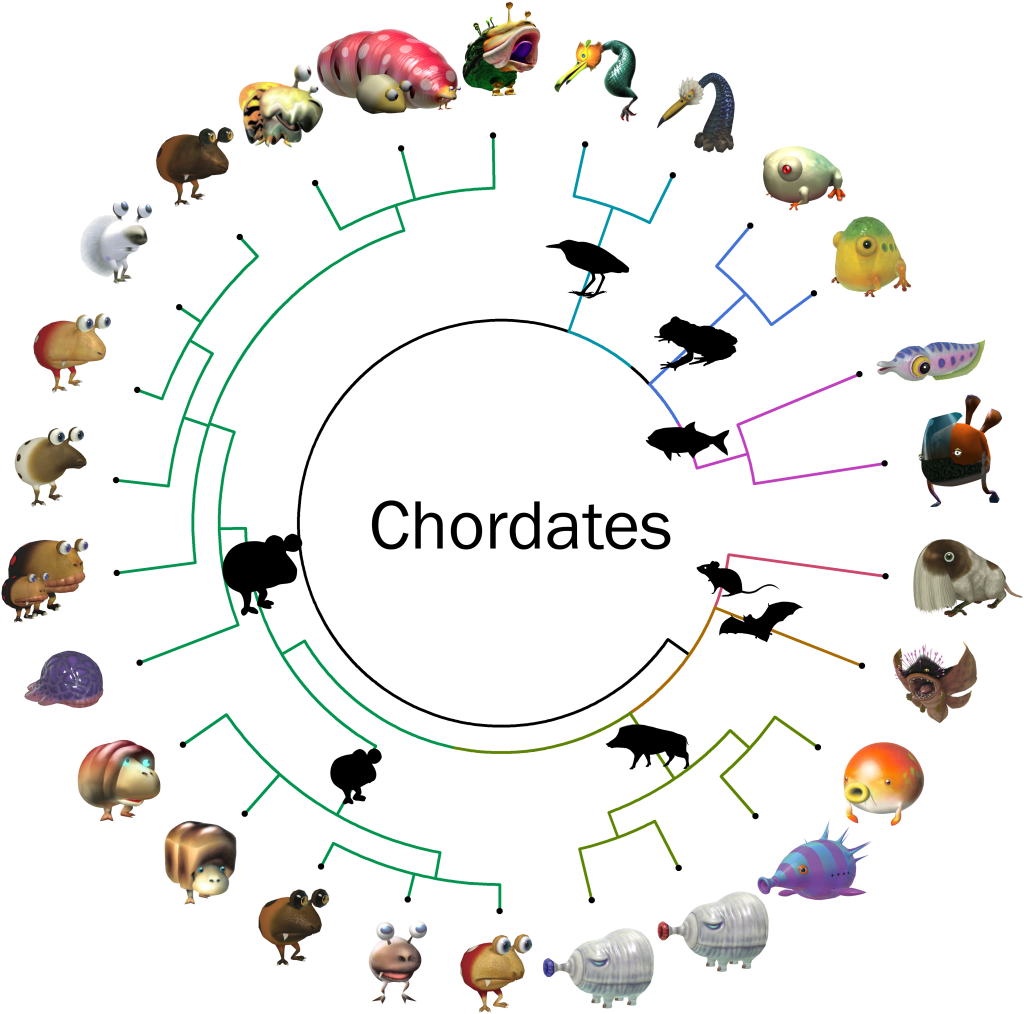
Throughout the series, discovering and defeating new enemies unlocks related entries in Captain Olimar’s notes, where he not only describes some aspect of their behaviour or ecology, but also attributes a binomial name and family to them. Using this information – as well as some assumptions about higher order taxonomy derived from real animals – we can construct a phylogenetic tree of their relationship using a dendrogram.
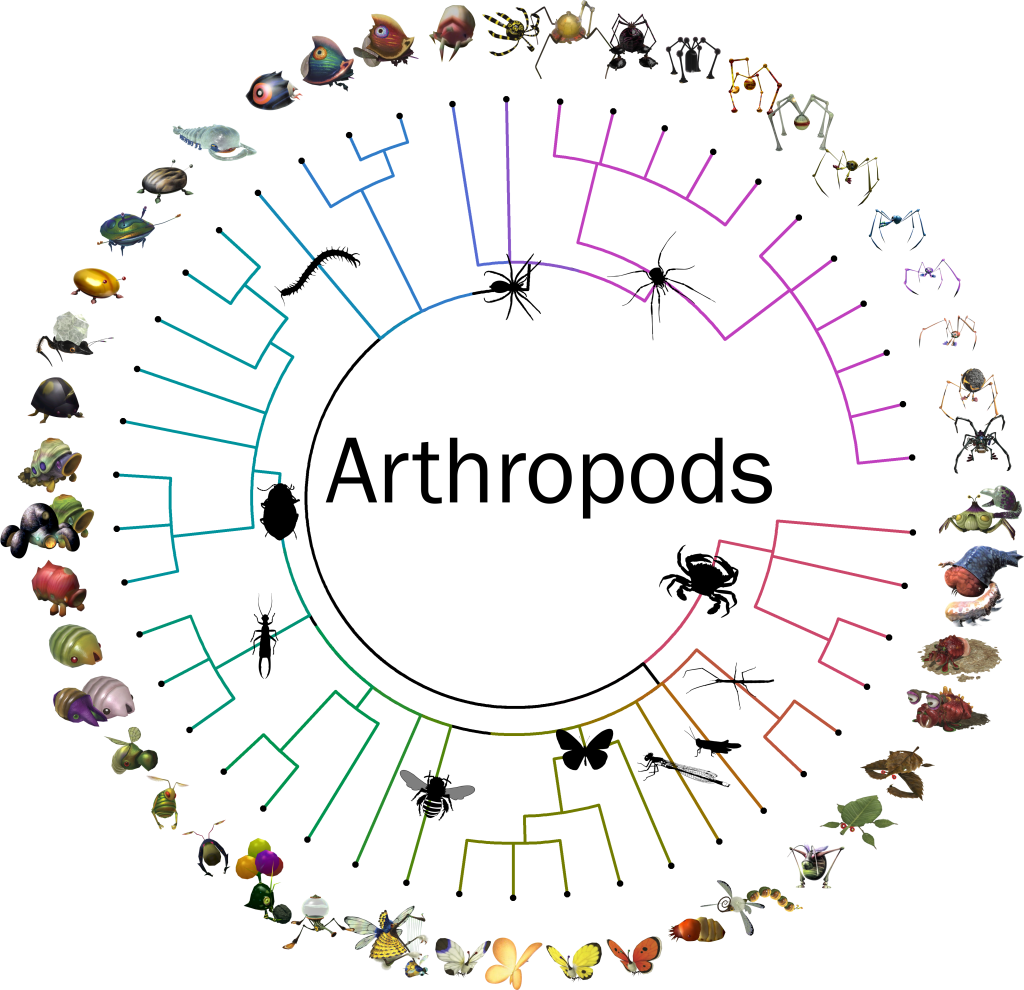
What you may immediately notice is the remarkable diversity of invertebrates (particularly arthropods). Unlike many other science fiction or fantasy-based video games, Pikmin draws heavy inspiration from the invertebrate side of life. Two main taxonomic groups – the dweevils of Pikmin 2 and the recurrent Long Legs bosses (purple lineage, top right) – particularly seem inspired by harvestmen (or “daddy long legs”): common arachnids, but not actually spiders! There is also a bevy of beetles, a couple crustaceans, and a handful of hogs.
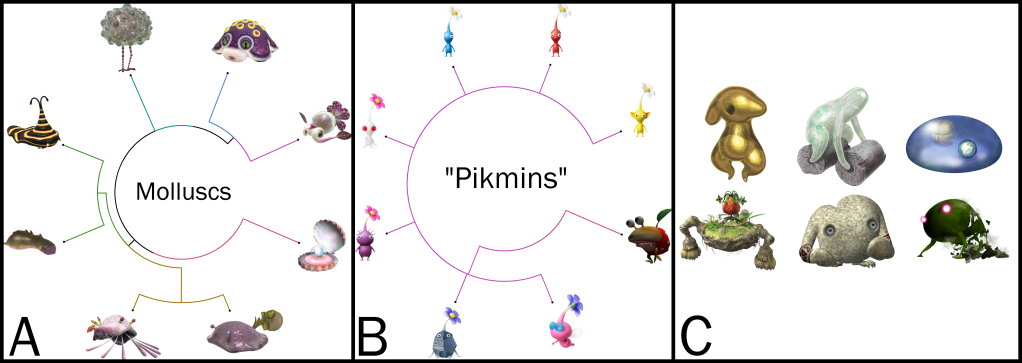
Constructing a pseudo-phylogenetic tree (a dendrogram, more accurately) also allows us to explore a few other things. For example, most creatures have an assigned weight (the number of Pikmin required to carry their corpse for food – a little bleak) and an internal “value”. Using the trees above, we can see how these traits have evolved over time using a statistical approach – this was done using the plotSimmap function of the phytools R package.
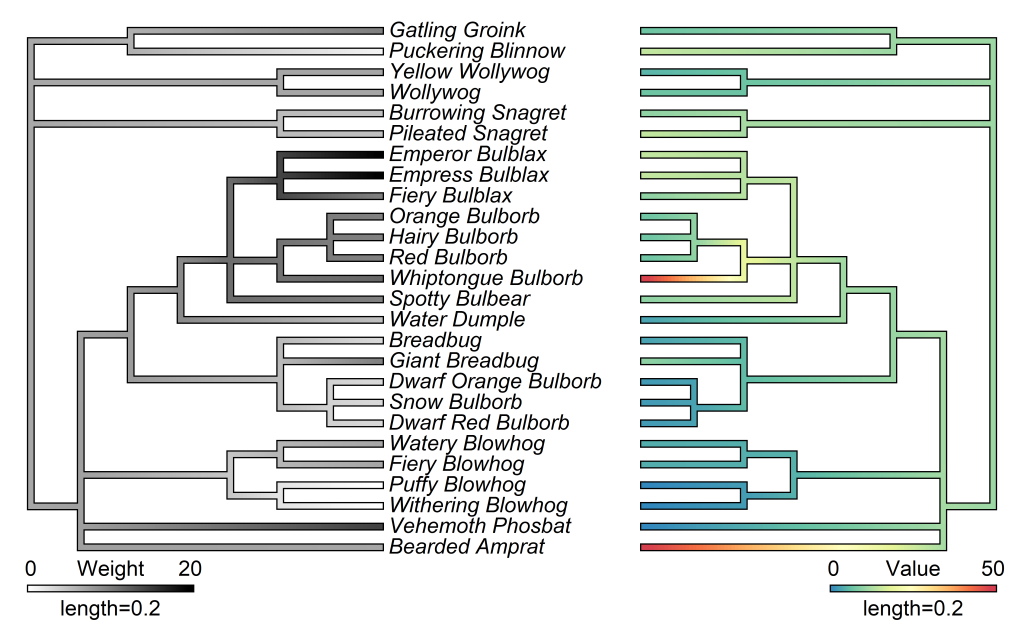
What you might notice comparing these trees side-by-side is that there doesn’t seem to be much association between weight and value – heavier enemies don’t necessarily seem to be worth more (although note that many of “zero” values are because the enemies don’t actually leave behind a corpse – particularly the Long Legs, which explode on death). But you could potentially apply this approach with any trait – colour, ecology, behaviour, you name it. This method is one way we can explore trends in the evolution of complex traits across a wide range of species, giving insights into evolutionary processes and outcomes.
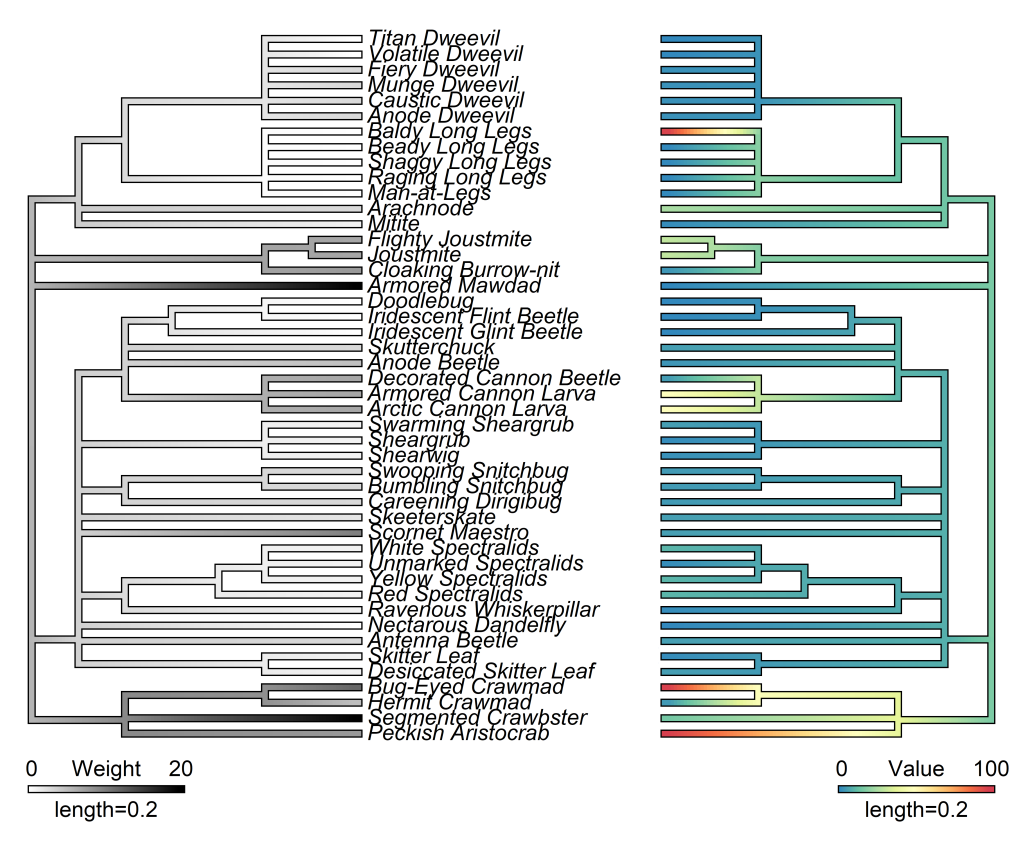
Evolutionary concepts exemplified in Pikmin
The remarkable diversity of creatures in Pikmin – and Olimar’s thorough notes – allow us to explore some real evolutionary concepts through the biodiversity of the series. Let’s take a look at a few interesting observations of Pikmin biodiversity, and see how well they reflect real evolutionary events.
Wasmannian mimicry
Something that might immediately be apparent within the phylogenetic tree of chordates is the disparity between the large and small “bulborbs” – often considered the most iconic enemies in the franchise. There are several variants of large and dwarf bulborbs, and each variant has a corresponding taxon of each. Yet despite that, all dwarf bulborb variants form a single species (within the Breadbug family) whilst the larger bulborbs form another (“true” bulborbs, within the Grub-dog family). The only exception is the Spotty Bulbear and the Dwarf Bulbear, of which both are the same species (Oculus terribillis, although the adult version is considered another subspecies for some reason). In his description of the dwarf red bulborb, Captain Olimar notes that:
“Although initially identified as a juvenile bulborb, groundbreaking new research indicates that this creature is in fact a member of the breadbug family. A close relative of the vanilla breadbug, it escapes predation through mimicry. Unique adaptation of the bulborb’s crimson coloration allows the species to safely commingle. Such effective adaptation and obfuscation by a prey species is rare, indicating this clever creature is a master of mimicry.”
Olimar’s Notes on the Dwarf Red Bulborb, Pikmin 2.
Similar notes are made for the other dwarf variants. Olimar’s description touches on something more accurate than some may realise. While mimicry is not uncommon in the animal kingdom (or even plants!), it typically involves either a toxic (Müllerian mimicry) or non-toxic (Batesian mimicry) species mimicking another toxic one. In this way, the mimicking species can capitalise on the association of image and toxicity in the model, either to falsely signal its own toxicity (Batesian) or to amplify the signal as a second toxic species (Müllerian).
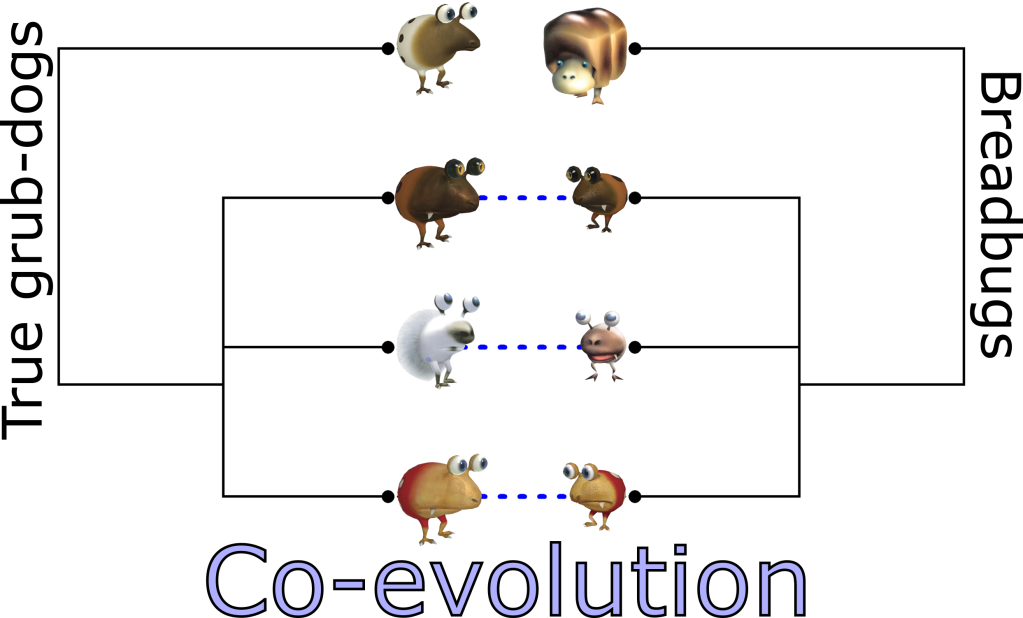
Instead, the bulborb evolutionary system actually embodies a much rarer type of mimicry – Wasmannian mimicry. Occurring in some social insects, Wasmannian mimicry involves one species modelling itself after a social species in order to blend in with the model’s group. One example is the wingless parasitic wasp Gelis agilis, which has evolved not only to look and behave like the black garden ant Lasius niger, but also expels a similar volatile chemical in response to threats. By copying all of these traits, G. agilis wasps can successfully avoid predation by wolf spiders whilst still using ant colonies to host its eggs. Mimicry of expelled chemicals is particularly challenging – G. agilis wasps display a remarkable propensity for mimicry which seems to be highly effective!
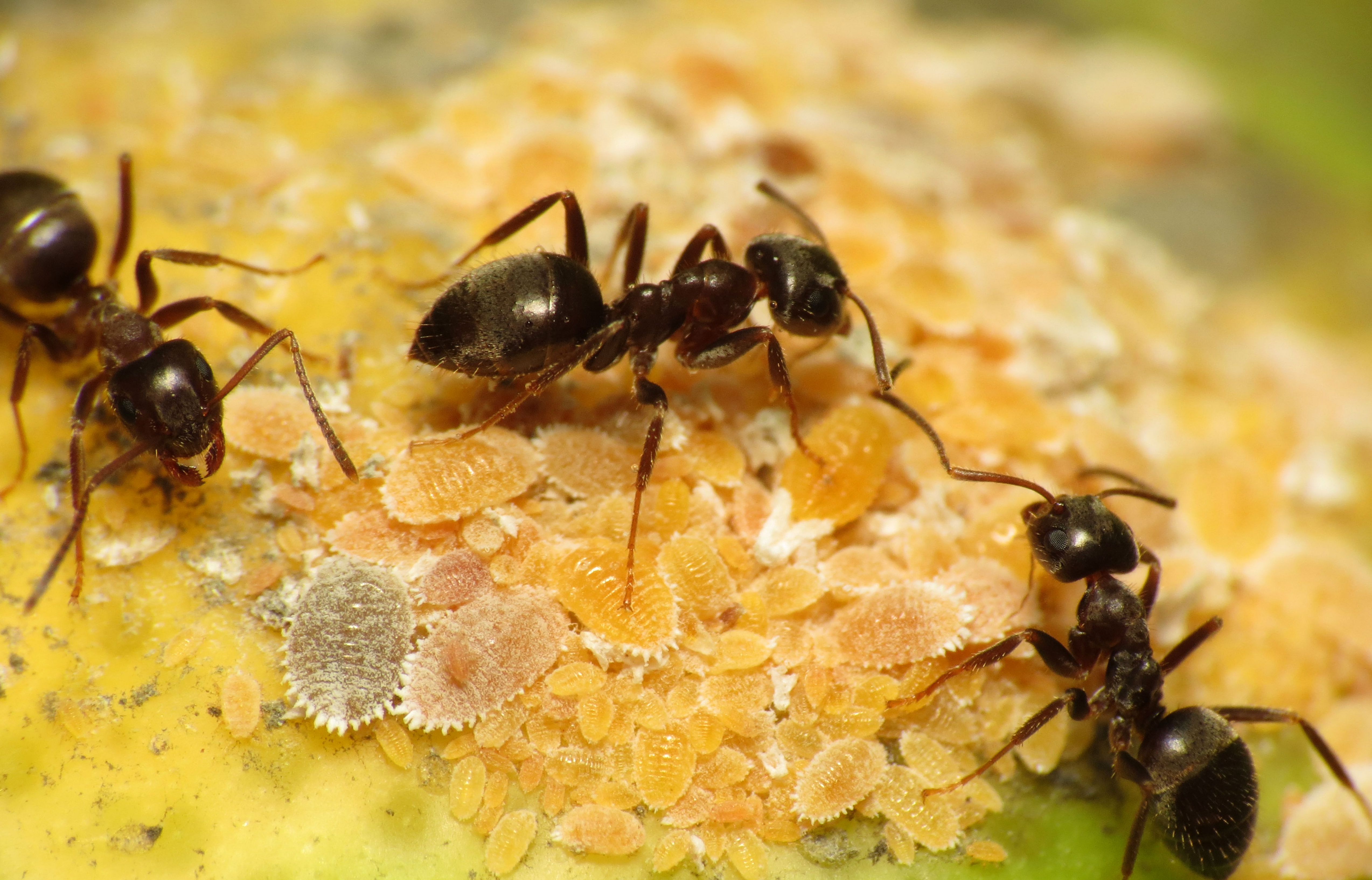
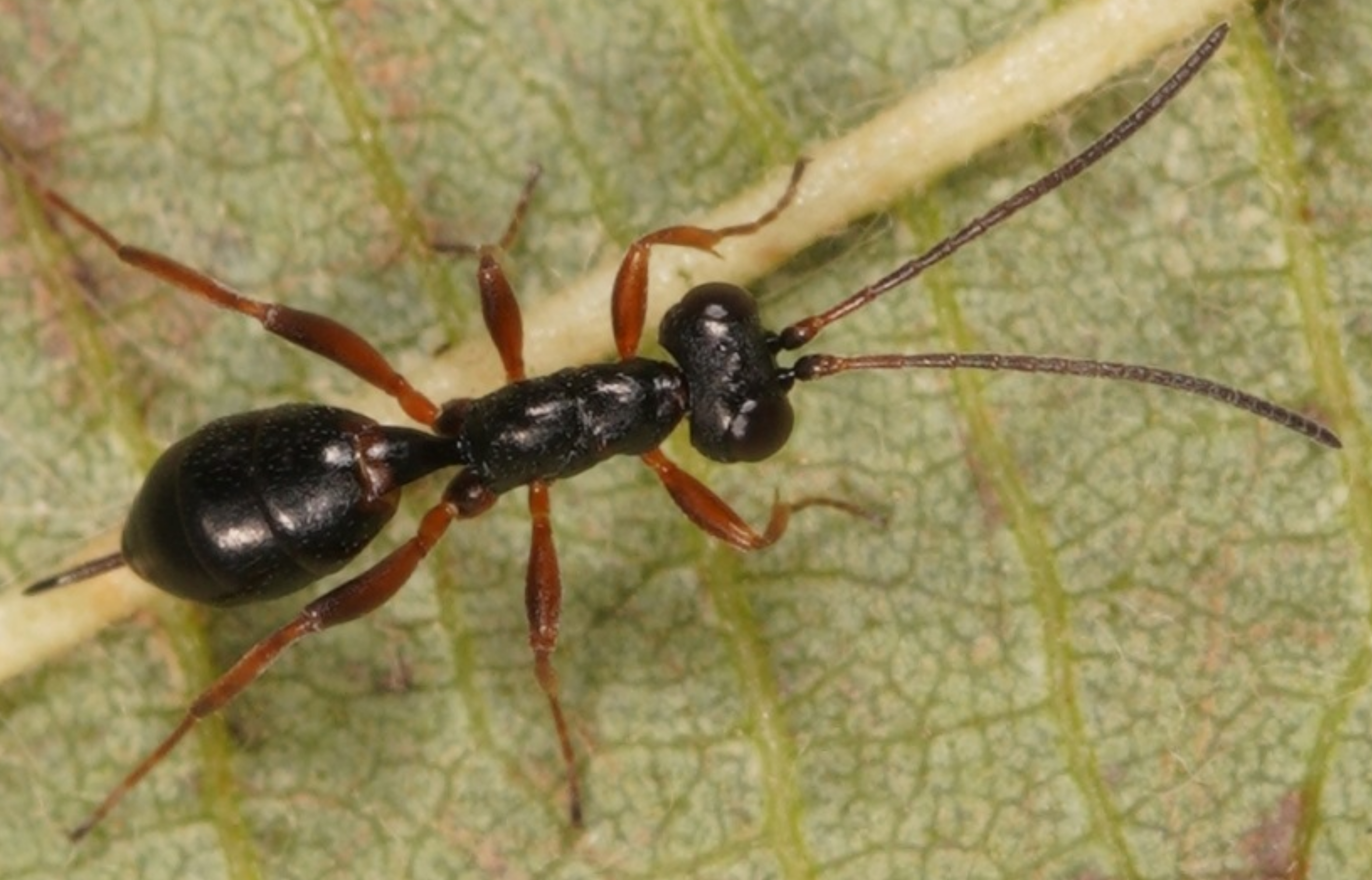
While somewhat less dramatic, dwarf bulborbs seem to encompass some elements of Wasmannian mimicry as well, resembling their giant models to avoid confrontation with predators. You could potentially argue that it also involves Batesian mimicry (as dwarf bulborbs are less daunting than their larger models) but given that large bulborbs respond to the cries of dwarf bulborbs in distress, there must be some social element to the system.
Adaptive radiation
Several taxonomic groups likely represent what we would consider an adaptive radiation – a sudden diversification of species into new evolutionary niches. This is mostly evident by the highly diverse and varied forms of bulborbs, dwarf bulborbs and dweevils especially, which each consist of one “true” species and at least five subspecies. Famous real-world adaptive radiations include Darwin’s finches (one of the first models for evolution!), African cichlid fishes and Caribbean anolis lizards. Adaptive radiations can be thought of as the cornerstone for evolutionary theory – the provide clear empirical examples of rapid evolution in response to a changing (or new) environment. Understanding how and why they occur is particularly important for understanding the distribution of biodiversity across the globe, and the potential for species to diversify into changing environments – something growing ever more important as human impacts modify the global environment.
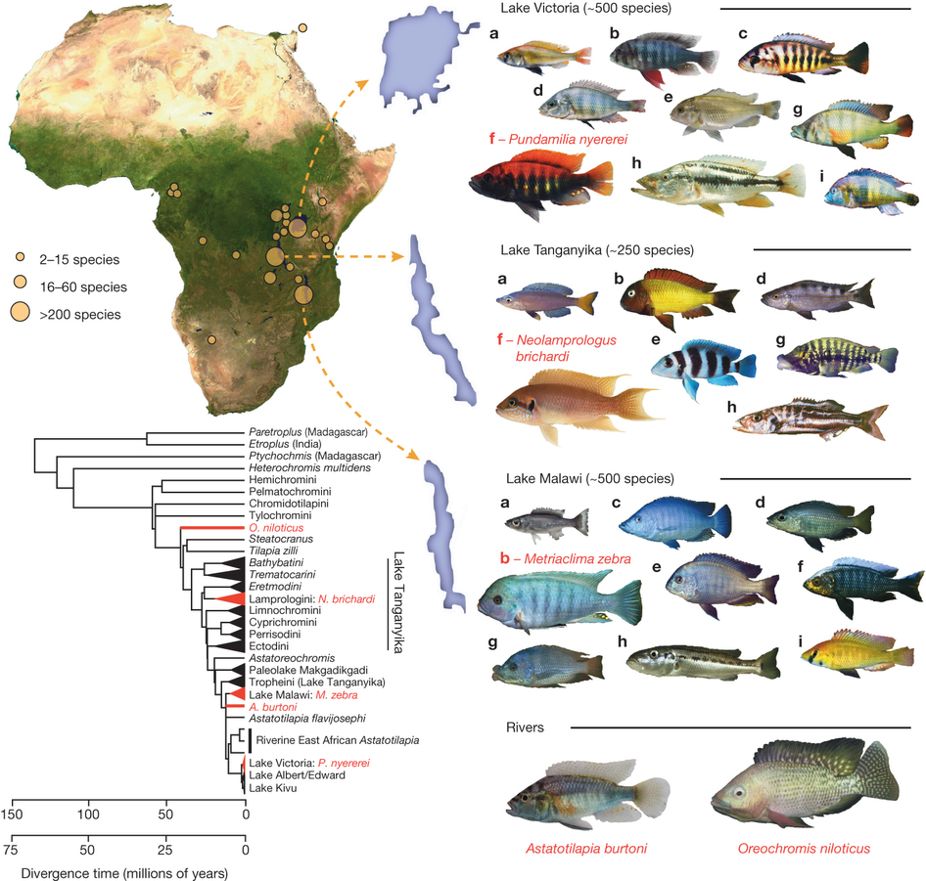
You could argue that these diverse groups in Pikmin – which (allegedly) form single species complexes, so (assumedly) are recent radiations – also represent adaptive radiations. Of course, this assumes that each of the groups within Pikmin originated relatively recently from a single ancestor, which they may not. We’ll have to see if any additional beasts in Pikmin 4 elevates the diversity status of any existing groups or creates new adaptive radiations!
Life cycles and metamorphosis
A few different species are represented by multiple life stages throughout the games, closely resembling real-life examples. The wogpole is described as the juvenile form of the yellow wollywog (tadpoles and frogs) and cannon beetles are found in both adult and larval forms. Interestingly, the vehemoth phosbat is simultaneously found as an adult, juveniles and the birthing “pods” in a single cave in Pikmin 3 – not typically how a bat is born! While an important characteristic of the ecology of any real world species as well, understanding these substantial changes in physiology and behaviour over the lifetime of a single animal has fuelled its own scientific subdiscipline – the evolutionary biology of development, or ‘evo-devo’. Evo-devo links aspects of cellular biology, embryology and genetics with evolutionary theory to explore how developmental processes have evolved across the tree of life, and particularly provides key insights into the complex interactions of genetics and phenotype. Perhaps the phosbat might become a new model species for evo-devo research in the Pikmin world?
Now departing PNF-404
While mostly a bit of goofy fun, thinking about how somewhat abstract and fantastical games like Pikmin can relate to real evolutionary theory provides one avenue for scientific education. Other games like Niche: A Genetics Survival game takes this one step further in linking aspects of evolutionary theory directly into the core gameplay mechanics. Scientifically-informed games is a growing field, and could be an important link in fostering the next generation of budding ecologists!
